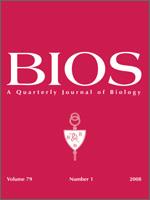Pulmonary fibrosis is an incurable disease belonging to a class of disorders known as Interstitial Lung Diseases, all of which lead to progressive scarring of the lungs. Upon diagnosis, most patients can expect 3-5 years mean survival time. Fibrosis results when “activated” fibroblasts called myofibroblasts are recruited to repair damage, but do not die or migrate away once the repair is complete. Over the last several decades, the calcium ion has been found to have a role in many cellular processes, including migration and death regulation. Our current hypothesis is that the presence of calcium impacts the fate of these cells. Understanding the role calcium plays in healthy myofibroblast migration will provide us with a standard by which we can view diseased myofibroblast migration. We have focused this set of experiments on the response of lung myofibroblasts from a healthy donor to calcium levels to determine a baseline for cell growth and migration using scratch assays. We also measured mitigation of cell death using cytotoxicity assays under varying calcium concentrations. Through scratch assay experiments, we have observed calcium-dependent changes in cell migration. Cytotoxicity data indicate that calcium restriction does not increase mortality of cultured lung myofibroblasts. Immunocytochemistry studies were used to verify that there is no calcium-dependence for cytoplasmic expression of alpha-smooth muscle actin, which indicates the presence of the myofibroblast phenotype. These data align with recent studies that indicate calcium, as a cofactor for nitric oxide synthase, may play a role in the mobility of myofibroblasts in lung tissue.
How to translate text using browser tools
1 December 2017
Impact of calcium on healthy lung myofibroblast mobility
Ryan K. Murphy,
Scott Ward,
Hali Gipson,
Nathalie Fowler,
Bethel V. Sharma
ACCESS THE FULL ARTICLE

BIOS
Vol. 88 • No. 4
December 2017
Vol. 88 • No. 4
December 2017
Apoptosis
Nitric oxide




